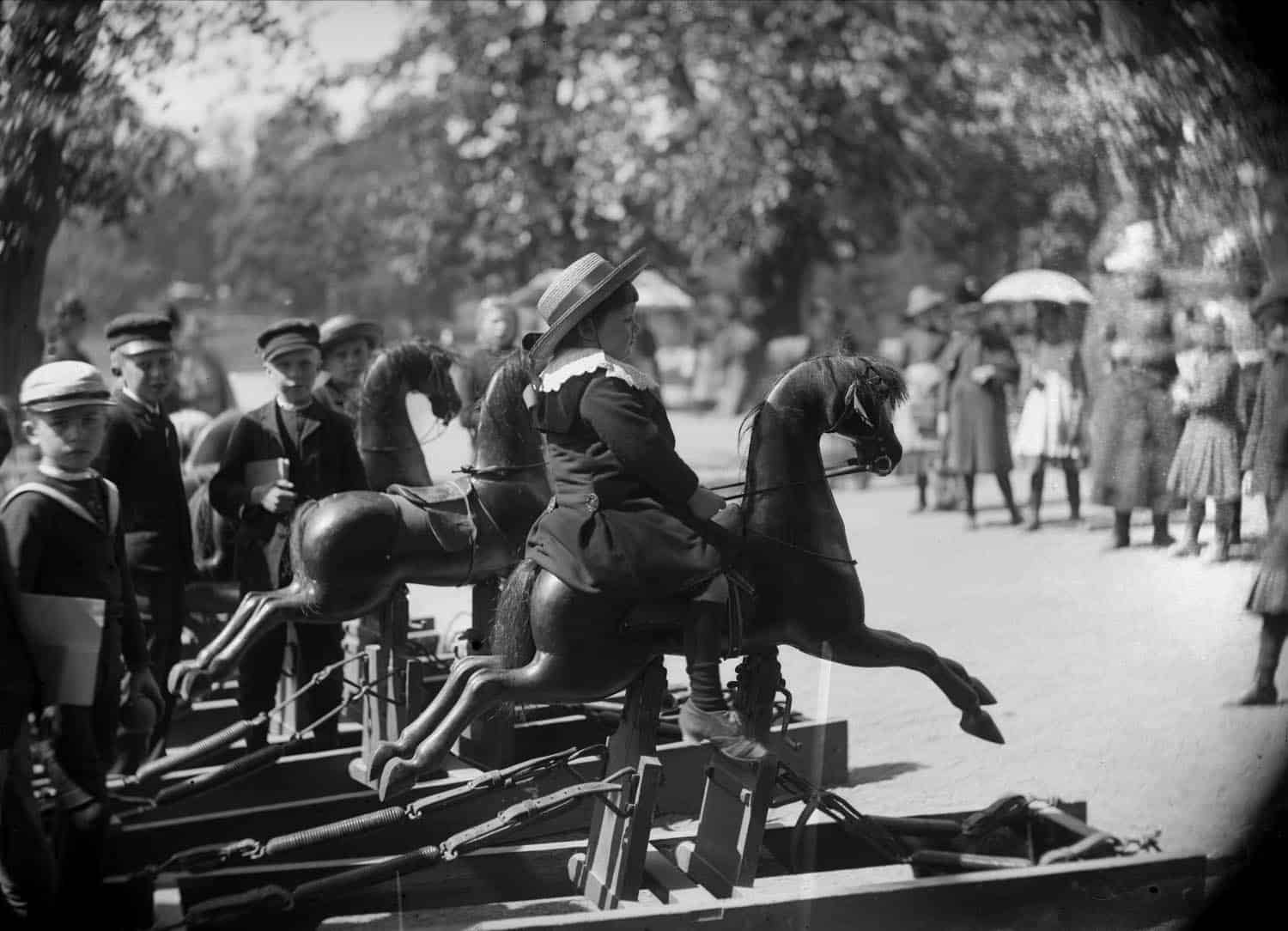The origin of toys is prehistoric. Dolls, animals, soldiers, and representations of tools used by adults are often found at archaeological sites. Toys excavated from the Indus valley civilization (3010-1500 BCE) include small carts, whistles shaped like birds, and toy monkeys which could slide down strings. Ancient Egyptian children played with dolls, made from stone, pottery, or wood, that had wigs and movable limbs. In Ancient Greece and Ancient Rome, children played with dolls made of wax or terracotta, as well as yo-yos. As a right of passage, when Greek children came of age, it was customary to sacrifice the toys of their childhood to the Gods.
During the Age of Enlightenment, when children were seen as individuals rather than extensions of their household, the variety and number of toys manufactured flourished. John Spilsbury invented the first jigsaw puzzle in 1767 to help children learn geography. Other popular toys included hoops, wagons, kites, and puppets.
In the nineteenth century, popular toys were puzzles, books, card and board games, and had educational purposes. Religiously themed toys, such as Noah’s Ark and animals, were also popular. The growing middle class meant that children had more leisure time and more time to play with toys. In the twentieth century, real wages were rising in Western society and even working-class families could afford toys for their children.
Toys have been an important part of childhood. Children discover their identity, strengthen their bodies, learn cause and effect, explore relationships, and practice skills that would be necessary in adulthood.































